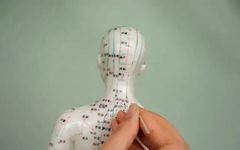What are the Eight Extraordinary Meridians?
The Eight Extraordinary Meridians, where “extraordinary” refers to their uniqueness, are the eight meridians outside of the twelve regular meridians (zheng jing), which do not directly connect to the organs and have no relationship of exterior and interior coordination, hence they are called “extraordinary meridians” (qi jing).
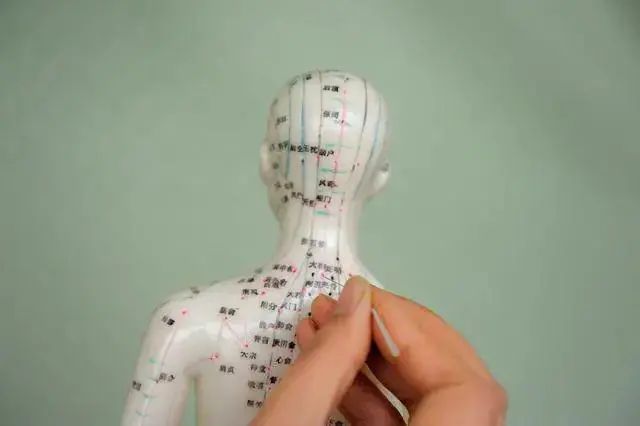
They include the Ren Mai (Ren Meridian), Du Mai (Governing Meridian), Chong Mai (Penetrating Meridian), Dai Mai (Belt Meridian), Yin Qiao Mai (Yin Heel Meridian), Yang Qiao Mai (Yang Heel Meridian), Yin Wei Mai (Yin Linking Meridian), and Yang Wei Mai (Yang Linking Meridian).
Physiological Characteristics of the Eight Extraordinary Meridians
The physiological characteristics of the Eight Extraordinary Meridians can be summarized in three points:
1. The Eight Extraordinary Meridians have no direct connection to the organs;
2. There is no exterior-interior relationship among the Eight Extraordinary Meridians;
3. The distribution of the Eight Extraordinary Meridians is not as widespread as that of the twelve regular meridians; there are no distributions of the Eight Extraordinary Meridians in the upper limbs.
Moreover, their pathways differ from those of the twelve regular meridians; except for the Dai Mai, the others generally flow from bottom to top.
Common Physiological Functions
What are the common physiological functions of the Eight Extraordinary Meridians?
1. Further strengthen the connections between the twelve regular meridians
For instance, the Du Mai governs all Yang meridians; the Ren Mai connects all Yin meridians; the Dai Mai restrains the longitudinal meridians. The Yin Qiao Mai governs the Yin and Yang of the left and right sides of the body; the Yang Wei Mai links the Yin and Yang of the exterior and interior. Thus, the Eight Extraordinary Meridians further enhance the connections among various parts of the body.
2. Regulate the Qi and blood of the twelve regular meridians
When the Qi of the twelve regular meridians is excessive, it is stored in the Eight Extraordinary Meridians; when the Qi and blood of the twelve regular meridians are insufficient, the Eight Extraordinary Meridians can “overflow” to provide timely supplementation.
3. The Eight Extraordinary Meridians have a close relationship with the organs such as the liver and kidneys, as well as with the uterus, brain, and marrow, indicating a significant connection in both physiological and pathological contexts.
Pathways of the Eight Extraordinary Meridians
Ren Mai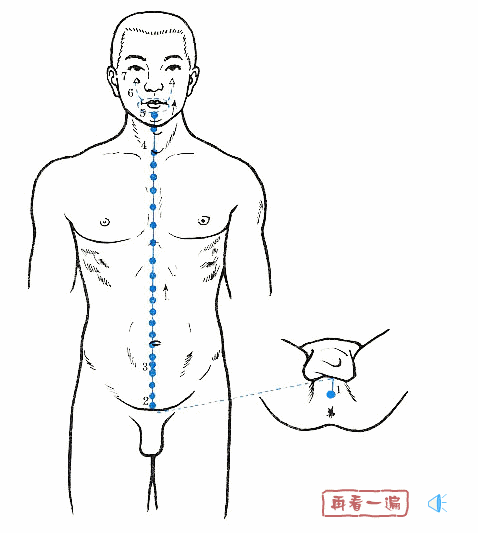 1. PathwayThe Ren Mai originates from the uterus, exits at the perineum, ascends along the midline of the abdomen, passes through the throat (at the Tian Tu point), reaches the inner lower lip, divides to circulate around the lips, intersects at the Yin Jiao point of the Du Mai, and then ascends to the lower eye socket (at the Cheng Qi point), connecting with the Yangming meridian of the foot.2. BranchesIt traverses from the uterus through the spine, ascending along the back.3. Physiological Functions(1) Regulates the Qi and blood of the Yin meridians, serving as the “sea of Yin meridians”.The Ren Mai runs along the midline of the abdomen, which is Yin, indicating its role in overseeing and managing the Qi of all Yin meridians. Additionally, the three Yin meridians of the foot intersect with the Ren Mai, and the three Yin meridians of the hand connect with the Ren Mai through the three Yin meridians of the foot, thus the Ren Mai has a regulatory effect on the Qi and blood of the Yin meridians, hence the saying “governs all Yin”.(2) Regulates menstruation and supports fetal developmentThe Ren Mai originates from the uterus, thus it plays a role in regulating menstruation and promoting female reproductive functions, hence the saying “the Ren governs the uterus and fetus”.Du Mai
1. PathwayThe Ren Mai originates from the uterus, exits at the perineum, ascends along the midline of the abdomen, passes through the throat (at the Tian Tu point), reaches the inner lower lip, divides to circulate around the lips, intersects at the Yin Jiao point of the Du Mai, and then ascends to the lower eye socket (at the Cheng Qi point), connecting with the Yangming meridian of the foot.2. BranchesIt traverses from the uterus through the spine, ascending along the back.3. Physiological Functions(1) Regulates the Qi and blood of the Yin meridians, serving as the “sea of Yin meridians”.The Ren Mai runs along the midline of the abdomen, which is Yin, indicating its role in overseeing and managing the Qi of all Yin meridians. Additionally, the three Yin meridians of the foot intersect with the Ren Mai, and the three Yin meridians of the hand connect with the Ren Mai through the three Yin meridians of the foot, thus the Ren Mai has a regulatory effect on the Qi and blood of the Yin meridians, hence the saying “governs all Yin”.(2) Regulates menstruation and supports fetal developmentThe Ren Mai originates from the uterus, thus it plays a role in regulating menstruation and promoting female reproductive functions, hence the saying “the Ren governs the uterus and fetus”.Du Mai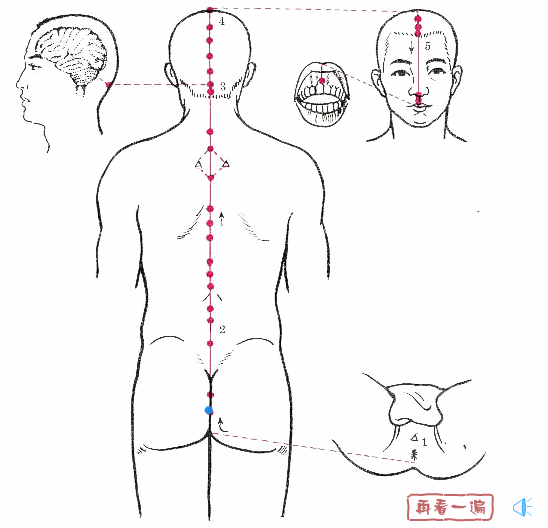 1. PathwayThe Du Mai originates from the lower abdomen, exits at the perineum, travels backward to the Chang Qiang point at the sacrococcygeal region, ascends along the spine, passes through the neck to the Feng Fu point, enters the brain, belongs to the brain, ascends along the midline of the head to the Bai Hui point at the top of the head, descends through the forehead to the Su Liao point at the tip of the nose, passes through the philtrum, and reaches the Yin Jiao point at the upper central teeth.2. BranchesThe first branch, along with the Chong and Ren meridians, originates from the uterus, exits at the perineum, and at the tailbone, it connects with the Kidney meridian of the foot and the Bladder meridian of the foot, traversing the spine and belonging to the kidneys.The second branch ascends directly from the lower abdomen through the navel, reaches the heart, and meets the Chong and Ren meridians at the throat, then descends to the jaw, circulates around the lips, and reaches the center below the eyes.The third branch, originating from the inner corner of the eye, ascends to the forehead, intersects at the top of the head, connects with the brain, then descends along the back of the neck, along the inner side of the scapula, and reaches the waist, entering the muscles on both sides of the spine, connecting with the kidneys.3. Physiological Functions(1) Regulates the Qi and blood of the Yang meridians, serving as the “sea of Yang meridians”.The Du Mai runs along the back of the body, which is Yang, indicating its role in overseeing and managing the Qi of all Yang meridians. Additionally, all six Yang meridians intersect with the Du Mai at the Da Zhui point, thus the Du Mai has a regulatory effect on the Yang meridians, hence the saying “governs all Yang meridians”.(2) Reflects the functions of the brain, kidneys, and spinal cordThe Du Mai belongs to the brain and connects with the kidneys. The kidneys produce marrow, and the brain is the sea of marrow. The relationship between the Du Mai and the brain, kidneys, and spinal cord is very close.(3) Governs reproductive functionsThe Du Mai connects with the kidneys, and since the kidneys govern reproduction, the Du Mai is related to reproductive functions.Chong Mai
1. PathwayThe Du Mai originates from the lower abdomen, exits at the perineum, travels backward to the Chang Qiang point at the sacrococcygeal region, ascends along the spine, passes through the neck to the Feng Fu point, enters the brain, belongs to the brain, ascends along the midline of the head to the Bai Hui point at the top of the head, descends through the forehead to the Su Liao point at the tip of the nose, passes through the philtrum, and reaches the Yin Jiao point at the upper central teeth.2. BranchesThe first branch, along with the Chong and Ren meridians, originates from the uterus, exits at the perineum, and at the tailbone, it connects with the Kidney meridian of the foot and the Bladder meridian of the foot, traversing the spine and belonging to the kidneys.The second branch ascends directly from the lower abdomen through the navel, reaches the heart, and meets the Chong and Ren meridians at the throat, then descends to the jaw, circulates around the lips, and reaches the center below the eyes.The third branch, originating from the inner corner of the eye, ascends to the forehead, intersects at the top of the head, connects with the brain, then descends along the back of the neck, along the inner side of the scapula, and reaches the waist, entering the muscles on both sides of the spine, connecting with the kidneys.3. Physiological Functions(1) Regulates the Qi and blood of the Yang meridians, serving as the “sea of Yang meridians”.The Du Mai runs along the back of the body, which is Yang, indicating its role in overseeing and managing the Qi of all Yang meridians. Additionally, all six Yang meridians intersect with the Du Mai at the Da Zhui point, thus the Du Mai has a regulatory effect on the Yang meridians, hence the saying “governs all Yang meridians”.(2) Reflects the functions of the brain, kidneys, and spinal cordThe Du Mai belongs to the brain and connects with the kidneys. The kidneys produce marrow, and the brain is the sea of marrow. The relationship between the Du Mai and the brain, kidneys, and spinal cord is very close.(3) Governs reproductive functionsThe Du Mai connects with the kidneys, and since the kidneys govern reproduction, the Du Mai is related to reproductive functions.Chong Mai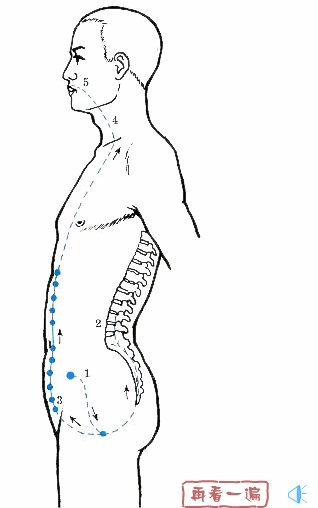 1. PathwayIt originates from the uterus, exits at the perineum, and divides into two branches.The ascending branch: the anterior branch (the main trunk of the Chong Mai) runs along the anterior abdominal wall, five fen beside the navel, ascends, connects with the Kidney meridian of the foot, spreads in the chest, then ascends through the throat, and circulates around the lips; the posterior branch runs along the posterior abdominal wall, ascending within the spine.The descending branch: exits the perineum and descends along the inner thigh to the space between the big toe.2. Physiological Functions(1) Regulates the Qi and blood of the twelve meridiansThe Chong Mai ascends to the head and descends to the feet, traversing the entire body, serving as a crucial point for overseeing the Qi and blood of all meridians. When the Qi and blood of the meridians and organs are excessive, the Chong Mai can store and retain it; when they are insufficient, the Chong Mai can provide infusion and supplementation to maintain the normal physiological activities of the body’s tissues and organs. Thus, it is known as the “sea of the twelve meridians”, the “sea of the five organs and six bowels”, and the “sea of blood”.(2) Governs reproductive functionsThe Chong Mai originates from the uterus, also known as the “blood chamber” or “sea of blood”. The Chong Mai has a role in regulating menstruation. It is closely related to reproductive functions; when the Chong Mai is abundant, menstruation occurs regularly, hence the saying, “When the Chong Mai is deficient, the heavenly and earthly pathways are blocked.” Here, the “Chong Mai” refers to the Chong Meridian. Additionally, if a man has insufficient Chong Mai, whether congenital or acquired, it can lead to a decline in reproductive function.(3) Regulates the ascending and descending of QiThe Chong Mai connects with the Kidney meridian of the foot, belongs to the Yangming, and connects with the Jueyin and Taiyang. The Chong Mai has the function of regulating the ascending and descending of Qi in certain organs (mainly the liver, kidneys, and stomach).Dai Mai
1. PathwayIt originates from the uterus, exits at the perineum, and divides into two branches.The ascending branch: the anterior branch (the main trunk of the Chong Mai) runs along the anterior abdominal wall, five fen beside the navel, ascends, connects with the Kidney meridian of the foot, spreads in the chest, then ascends through the throat, and circulates around the lips; the posterior branch runs along the posterior abdominal wall, ascending within the spine.The descending branch: exits the perineum and descends along the inner thigh to the space between the big toe.2. Physiological Functions(1) Regulates the Qi and blood of the twelve meridiansThe Chong Mai ascends to the head and descends to the feet, traversing the entire body, serving as a crucial point for overseeing the Qi and blood of all meridians. When the Qi and blood of the meridians and organs are excessive, the Chong Mai can store and retain it; when they are insufficient, the Chong Mai can provide infusion and supplementation to maintain the normal physiological activities of the body’s tissues and organs. Thus, it is known as the “sea of the twelve meridians”, the “sea of the five organs and six bowels”, and the “sea of blood”.(2) Governs reproductive functionsThe Chong Mai originates from the uterus, also known as the “blood chamber” or “sea of blood”. The Chong Mai has a role in regulating menstruation. It is closely related to reproductive functions; when the Chong Mai is abundant, menstruation occurs regularly, hence the saying, “When the Chong Mai is deficient, the heavenly and earthly pathways are blocked.” Here, the “Chong Mai” refers to the Chong Meridian. Additionally, if a man has insufficient Chong Mai, whether congenital or acquired, it can lead to a decline in reproductive function.(3) Regulates the ascending and descending of QiThe Chong Mai connects with the Kidney meridian of the foot, belongs to the Yangming, and connects with the Jueyin and Taiyang. The Chong Mai has the function of regulating the ascending and descending of Qi in certain organs (mainly the liver, kidneys, and stomach).Dai Mai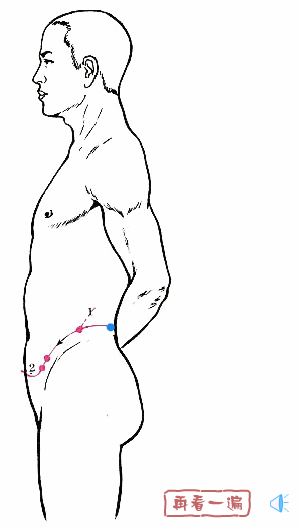 1. PathwayThe Dai Mai originates from the lateral costal region, descends obliquely, intersects at the Dai Mai point of the Gallbladder meridian of the foot, encircles the body, and then descends obliquely along the upper edge of the hip bone to the lower abdomen.2. Physiological FunctionsIt restrains the longitudinal meridians and governs women’s leukorrhea.Yin Qiao Mai
1. PathwayThe Dai Mai originates from the lateral costal region, descends obliquely, intersects at the Dai Mai point of the Gallbladder meridian of the foot, encircles the body, and then descends obliquely along the upper edge of the hip bone to the lower abdomen.2. Physiological FunctionsIt restrains the longitudinal meridians and governs women’s leukorrhea.Yin Qiao Mai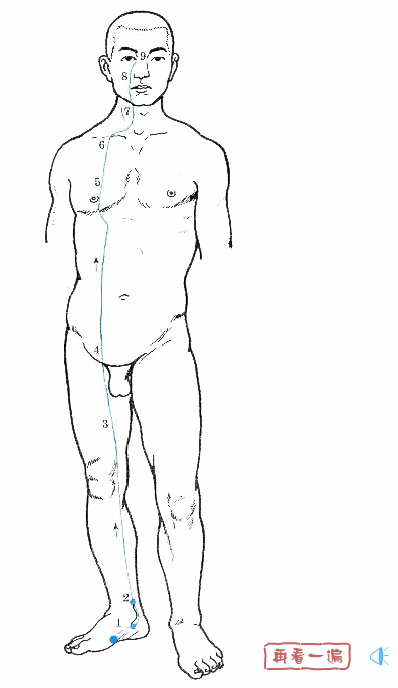 1. PathwayThe Yin Qiao Mai originates from the inner side of the heel of the foot, at the Zhaohai point of the Kidney meridian of the foot, ascends through the inner ankle, along the inner side of the thigh, enters the anterior genital area, ascends along the anterior surface of the trunk, reaches the chest, enters the Xue Pen, ascends beside the Adam’s apple to the Ren Mai’s Tian Tu point, and reaches the side of the nose, connecting with the inner corner of the eye, and ascends along with the Yang Qiao and Taiyang meridians.2. Physiological FunctionsIt controls the opening and closing of the eyes and the movement of the muscles.Yang Qiao Mai
1. PathwayThe Yin Qiao Mai originates from the inner side of the heel of the foot, at the Zhaohai point of the Kidney meridian of the foot, ascends through the inner ankle, along the inner side of the thigh, enters the anterior genital area, ascends along the anterior surface of the trunk, reaches the chest, enters the Xue Pen, ascends beside the Adam’s apple to the Ren Mai’s Tian Tu point, and reaches the side of the nose, connecting with the inner corner of the eye, and ascends along with the Yang Qiao and Taiyang meridians.2. Physiological FunctionsIt controls the opening and closing of the eyes and the movement of the muscles.Yang Qiao Mai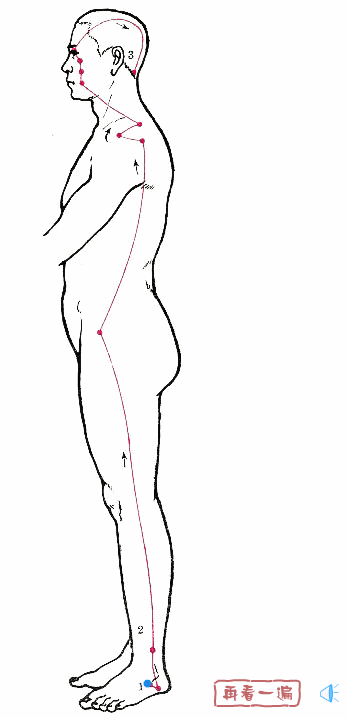 1. PathwayThe Yang Qiao Mai originates from the outer side of the heel of the foot, at the Shen Mai point of the Yangming meridian of the foot, ascends along the outer ankle, travels upward along the outer edge of the lower limb to the abdomen, along the posterior outer side of the chest, through the shoulder, neck, and along the side of the mouth, reaching the inner corner of the eye. It connects with the Yangming and Yin Qiao meridians, then ascends along the Yangming meridian to meet the Shaoyang meridian at the Feng Chi point behind the neck.2. Physiological FunctionsIt controls the opening and closing of the eyes and the movement of the muscles.Yin Wei Mai
1. PathwayThe Yang Qiao Mai originates from the outer side of the heel of the foot, at the Shen Mai point of the Yangming meridian of the foot, ascends along the outer ankle, travels upward along the outer edge of the lower limb to the abdomen, along the posterior outer side of the chest, through the shoulder, neck, and along the side of the mouth, reaching the inner corner of the eye. It connects with the Yangming and Yin Qiao meridians, then ascends along the Yangming meridian to meet the Shaoyang meridian at the Feng Chi point behind the neck.2. Physiological FunctionsIt controls the opening and closing of the eyes and the movement of the muscles.Yin Wei Mai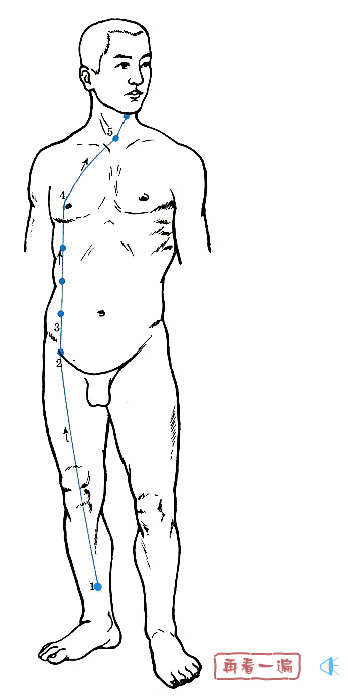 1. PathwayThe Yin Wei Mai originates from the Zhubin point, five cun above the inner ankle, along the inner edge of the lower limb, ascends to the abdomen, travels alongside the Taiyin Spleen meridian to the lateral costal region, connects with the Jueyin Liver meridian, ascends to intersect at the Tian Tu point of the Ren Mai, and terminates at the Lian Quan point in the throat.2. Physiological FunctionsThe term “Wei” in Wei Mai means to connect and link. The Yin Wei has the function of linking the Yin meridians.Yang Wei Mai
1. PathwayThe Yin Wei Mai originates from the Zhubin point, five cun above the inner ankle, along the inner edge of the lower limb, ascends to the abdomen, travels alongside the Taiyin Spleen meridian to the lateral costal region, connects with the Jueyin Liver meridian, ascends to intersect at the Tian Tu point of the Ren Mai, and terminates at the Lian Quan point in the throat.2. Physiological FunctionsThe term “Wei” in Wei Mai means to connect and link. The Yin Wei has the function of linking the Yin meridians.Yang Wei Mai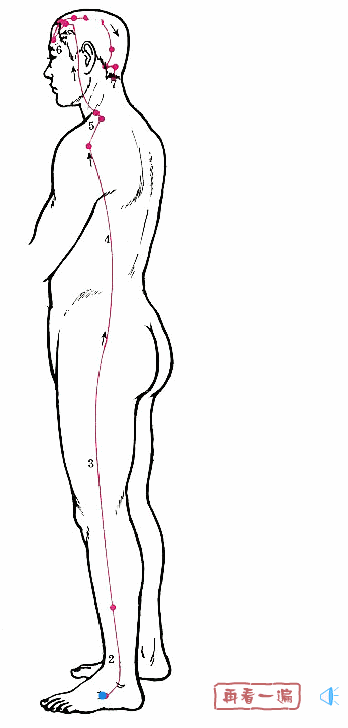 1. PathwayThe Yang Wei Mai originates from the Jinmen point of the Yangming meridian of the foot, passes over the outer ankle, ascends along the outer edge of the lower limb, travels through the trunk’s posterior outer side, from the axilla over the shoulder, through the neck, behind the ear, and moves forward to the forehead, distributing along the side of the head and the back of the neck, connecting with the Du Mai.2. Physiological Functions:It links the Yang meridians.Eight Representative AcupointsThe Eight Extraordinary Meridians refer to the Du Mai, Ren Mai, Chong Mai, Dai Mai, Yin Wei Mai, Yang Wei Mai, Yin Qiao Mai, and Yang Qiao Mai. They differ from the twelve regular meridians in that they do not directly connect to the organs and have no exterior-interior relationship, hence they are called “extraordinary meridians”.In addition to the twelve regular meridians, the human body has a more important balance system, which is the Eight Extraordinary Meridians. The Eight Extraordinary Meridians are our lifelines,as long as you massage the major acupoints on the Eight Meridians daily, the meridians will be opened, and you will feel a surge of clear Yang energy in your body.The Eight Extraordinary Meridians regulate the accumulation and infusion of Qi and blood in the twelve meridians.Among the Eight Meridians, there are eight representative acupoints: Gong Sun, Nei Guan, Lin Qi, Wai Guan, Shen Mai, Hou Xi, Lie Que, and Zhao Hai.Each acupoint is like a “nuclear reactor”; treating one can affect a large area.
1. PathwayThe Yang Wei Mai originates from the Jinmen point of the Yangming meridian of the foot, passes over the outer ankle, ascends along the outer edge of the lower limb, travels through the trunk’s posterior outer side, from the axilla over the shoulder, through the neck, behind the ear, and moves forward to the forehead, distributing along the side of the head and the back of the neck, connecting with the Du Mai.2. Physiological Functions:It links the Yang meridians.Eight Representative AcupointsThe Eight Extraordinary Meridians refer to the Du Mai, Ren Mai, Chong Mai, Dai Mai, Yin Wei Mai, Yang Wei Mai, Yin Qiao Mai, and Yang Qiao Mai. They differ from the twelve regular meridians in that they do not directly connect to the organs and have no exterior-interior relationship, hence they are called “extraordinary meridians”.In addition to the twelve regular meridians, the human body has a more important balance system, which is the Eight Extraordinary Meridians. The Eight Extraordinary Meridians are our lifelines,as long as you massage the major acupoints on the Eight Meridians daily, the meridians will be opened, and you will feel a surge of clear Yang energy in your body.The Eight Extraordinary Meridians regulate the accumulation and infusion of Qi and blood in the twelve meridians.Among the Eight Meridians, there are eight representative acupoints: Gong Sun, Nei Guan, Lin Qi, Wai Guan, Shen Mai, Hou Xi, Lie Que, and Zhao Hai.Each acupoint is like a “nuclear reactor”; treating one can affect a large area.

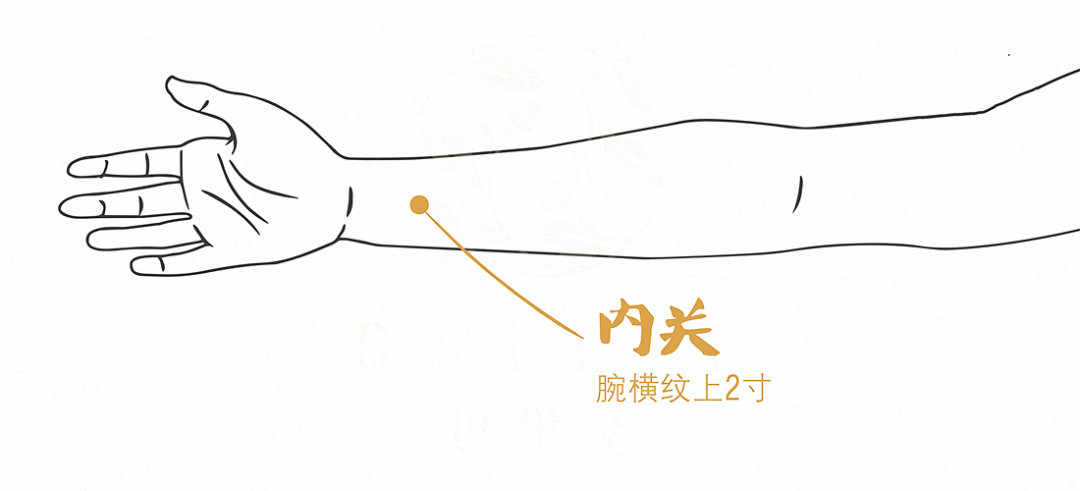
Many female friends between the ages of 40 and 50 often experiencepalpitations, shortness of breath, and profuse sweatingand other discomforts. Hospitals may not find any specific illness, only vaguely diagnosing it as menopausal syndrome or sub-health.
In fact, according to ancient wisdom, when women reach this age, their bodies are generally in a stage of decline, with aging starting from the Yangming meridian, gradually leading to a decline in the Qi and blood of the three Yang meridians. The head is the meeting point of all Yang, and when the Qi and blood cannot reach the face, wrinkles and spots appear.
Beauty is actually closely related to Qi and blood. The heart governs the spirit, and its radiance is in the face. The spirit of the heart relies on Qi and blood for nourishment; when Qi and blood are abundant, it naturally reflects on the face, so women should first nourish the heart for beauty.
The Nei Guan point belongs to the Pericardium meridian, connects with the Ren Mai, and is one of the intersection points of the Eight Meridians. The true efficacy of the Nei Guan point lies in its ability to open the body’s internal mechanisms, benefiting Qi and blood, calming the spirit, and enhancing beauty.
The Nei Guan point is easy to locate, on the inner side of the arm, two cun above the wrist crease. When locating the point, make a loose fist and place it palm-up; use the index, middle, and ring fingers of the other hand to align with the wrist crease, and the point where the index finger presses is the Nei Guan point. The benefit of this acupoint in health maintenance is that it can be pressed anytime and anywhere, with a slight feeling of soreness being ideal.

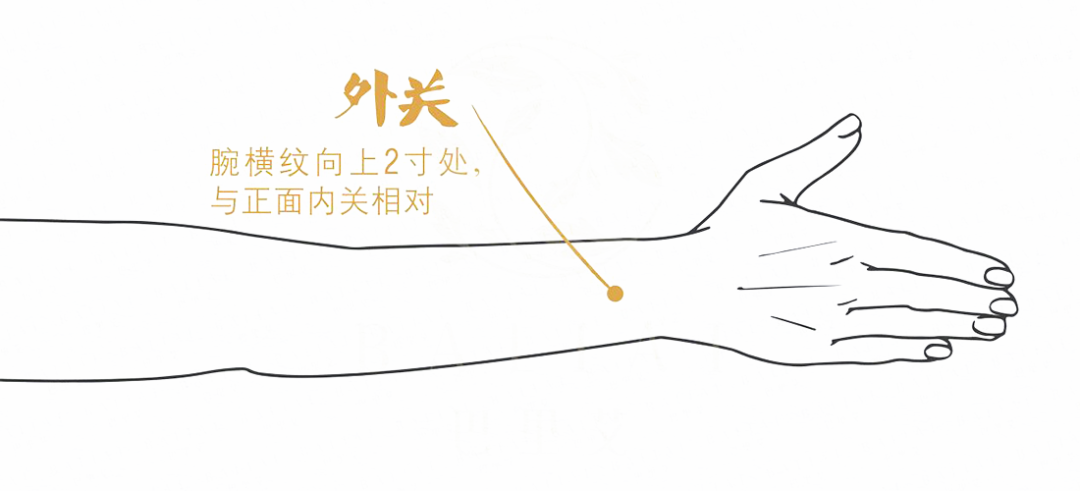
Traditional Chinese Medicine believes that temporary hearing problemsare manifestations of insufficient Yang Qi in the body. So what role does the Wai Guan point play at this moment?Massaging the Wai Guan point can enrich the Yuan Yang Qi of the San Jiao and guide the Yuan Qi to circulate throughout the body.When this acupoint is blocked, it can cause the eardrum to become slack and unable to return to its normal state.
The Wai Guan point can also be used clinically to treat acute lumbar sprains.There was a patient around 40 years old who bent down to pick something up and stood up too quickly, resulting in an inability to move his waist; any slight movement caused unbearable pain. Treatment involved acupuncture and massage, with acupuncture at both Wai Guan points while allowing him to perform twisting movements of the waist; after a few minutes, the back pain completely disappeared, and he could move normally.
The Wai Guan point is the Luo point of the San Jiao meridian, located two cun above the wrist crease on the dorsal side, opposite the Nei Guan point. It connects with the Yang Wei point, has the effects of dispelling exterior pathogens, relieving wind, and alleviating pain; it is not only effective for acute lumbar sprains but also has good effects on arthritis, cervical spondylosis, and more.

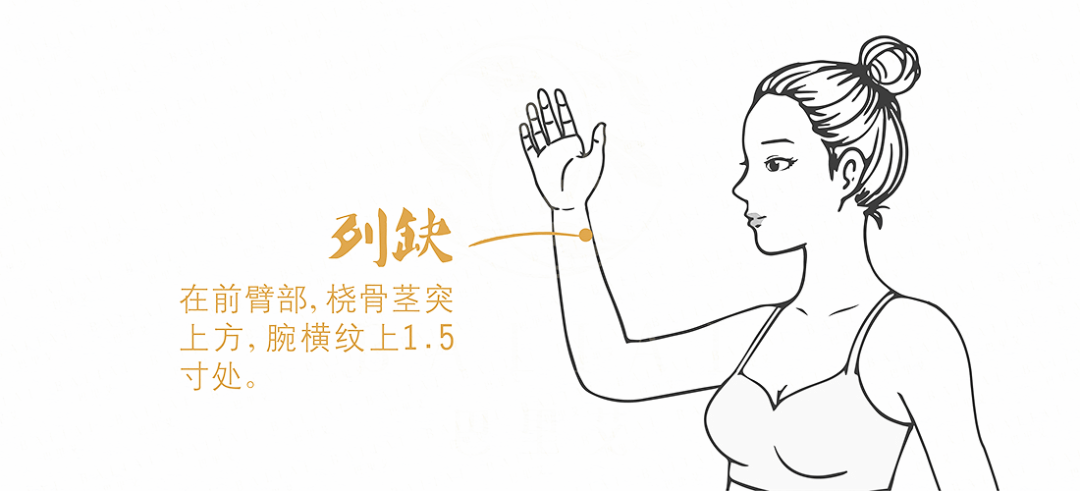
Stiff neck is something almost everyone has experienced, and it can be quite painful. A stiff neck can also be an early signal of cervical spine issues; those who frequently experience stiff necks should take timely measures to prevent it, as it can often lead to cervical spondylosis. The Lie Que point has unique effects in preventing cervical spondylosis. On the human body, the Lie Que point serves as a tool for repairing head-related ailments.
According to the “Huangdi Neijing”, the Lie Que point primarily treats migraines, headaches, and stiff necks.In the “Zhen Jiu Da Cheng”, there is a well-known verse about the four major acupoints, one of which states: “For neck and above ailments, seek the Lie Que.” This means that ailments above the neck can be treated and adjusted using this acupoint.
The Lie Que point is easy to locate, 1.5 cun above the wrist crease on the radial styloid process. When locating the point, cross the thumbs of both hands; the depression where the fingertips touch is the acupoint. The technique for using the Lie Que point mainly involves flicking.

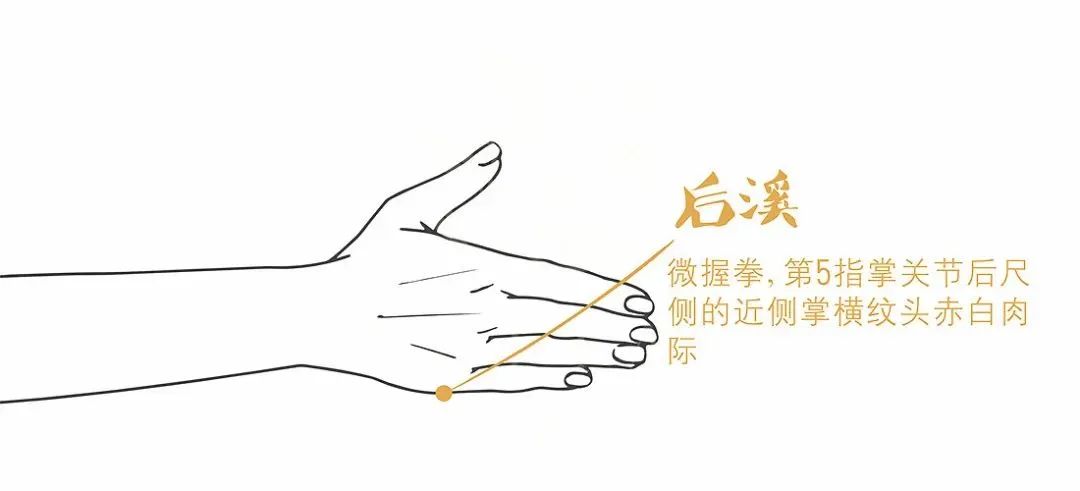
How to find the Hou Xi point? Make a fist, and the point is located at the distal end of the transverse crease behind the fifth finger joint (i.e., the end of the transverse crease behind the fist).
If you are sitting in front of a computer, you can place the Hou Xi point of both hands on the edge of the table, using the wrist joint to roll your hands back and forth easily to achieve a stimulating effect.
This is suitable for office workers who often sit in front of computers and for developing children; it can prevent hunchback, cervical spine, lumbar, and leg pain, and also has benefits for protecting eyesight, relieving fatigue, and replenishing Qi.
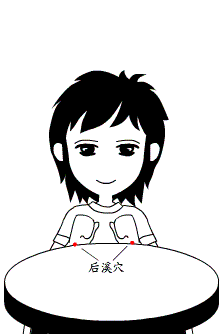
During the rolling, there will be a slight soreness. Just take three to five minutes each day to do this, and if you persist, it will have very good effects on the cervical and lumbar vertebrae.

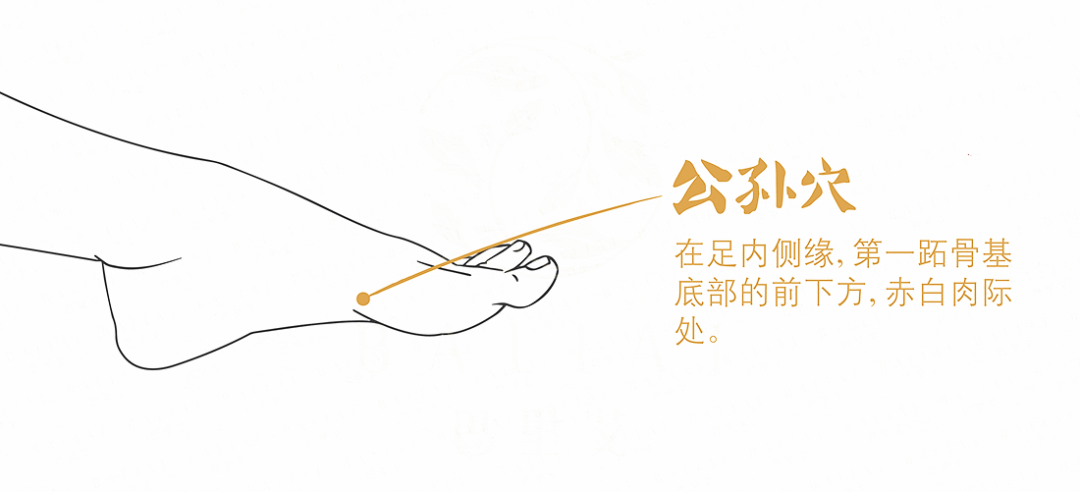
For sore throats, massaging the Zhao Hai point will have excellent effects,because the Zhao Hai point belongs to the Yin Qiao Mai, which intersects with the Kidney meridian of the foot, and is one of the key intersection points of the Eight Meridians.It has the functions of nourishing the kidneys, clearing heat, and regulating the San Jiao, providing both nourishment and heat-clearing effects.
Sun Simiao in the “Qian Jin Yao Fang” referred to this point as “Lou Yin”, meaning that if there is an issue with this point, the kidney water decreases, leading to kidney Yin deficiency and causing deficiency heat to rise. Therefore, whenever we feel discomfort in the chest, dry throat, hoarseness, or even chronic pharyngitis, we can press this point, which not only has the effect of nourishing the kidneys and clearing heat but also helps the functions of the San Jiao to flow smoothly.
To locate the point, align the soles of both feet; there is a small depression below the inner ankle, which is where the acupoint is located. When massaging this point, one should keep their mouth closed and refrain from speaking, feeling the saliva in the mouth, which should be swallowed down to the stomach. Generally, after pressing for 3 to 5 minutes, one will feel saliva in the throat, and the pain will immediately alleviate.
Keeping the mouth closed is to facilitate the upward flow of saliva to moisten the throat, which is what the ancients referred to as the method of swallowing saliva. Massaging the Zhao Hai point stimulates the essence Qi in the kidneys, guiding the fluids upward to moisten the throat, and the deficiency heat is nourished by the kidney water, thus the throat pain will naturally be “cured with water”.

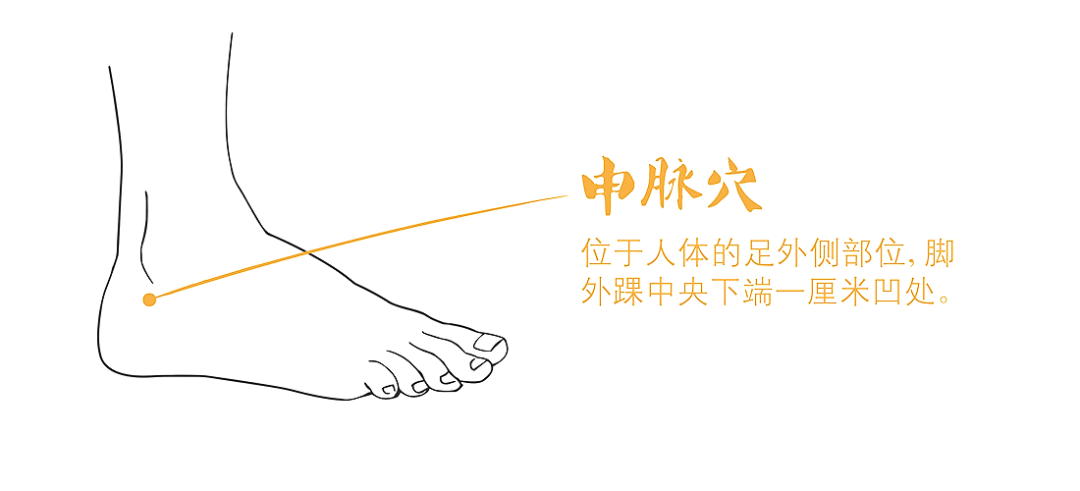
“Lower back pain and leg pain” is a clear sign of the bladder meridian being affected by cold evil Qi.Since the Yang Qiao connects with the bladder meridian, and the Shen Mai point itself is an important acupoint of the bladder meridian.Thus, the Shen Mai point is the ultimate Yang point,using this point can dispel internal cold evil and allow Yang Qi to reach the top, not only balancing the body but also making one walk lightly and agilely.
When combined with Xiao Qing Long Tang, it achieves a synergistic effect of resolving both exterior and interior. It helps expel cold evil from the body in a short time and restores one’s Yang Qi, making it a wonderful acupoint for dispelling cold and reviving Yang.
The Shen Mai point is an important intersection point of the Yang Qiao and the Taiyang bladder meridian; its location is also very simple, in the depression directly below the outer ankle bone. When the body is affected by cold evil, it tends to curl up and shiver, which in TCM is called “contraction and pulling in”; the Shen Mai point has the meaning of stretching the meridians, quickly mobilizing the Yang Qi of the body, and when the Yang Qi is sufficient, the cold evil will disperse.


The Gong Sun point is the Luo point of the Spleen meridian, belonging to the spleen, connecting with the stomach, and directly communicating with the Chong Mai located in the chest and abdomen, thus it has the effect of treating various diseases of the spleen and stomach and the chest and abdomen.
Traditional Chinese Medicine believes that the treatment of all gynecological diseases should start with the spleen and stomach, especially for menstrual irregularities, which should first address the stomach.The spleen governs blood and is responsible for transportation and transformation. If the spleen and stomach are deficient and cold, they cannot transform and transport fluids, leading to dysmenorrhea, which may also be accompanied by vomiting, nausea, headaches, and other symptoms.
Women with dysmenorrhea can benefit from frequently massaging the Gong Sun point.The Gong Sun point is located on the inner edge of the foot; I generally consider the Gong Sun point as a region, located behind the big toe, where there is a large metatarsal bone. Press along this bone on the inner side of the foot until you find the point that feels most sore or painful; that is your own Gong Sun point.

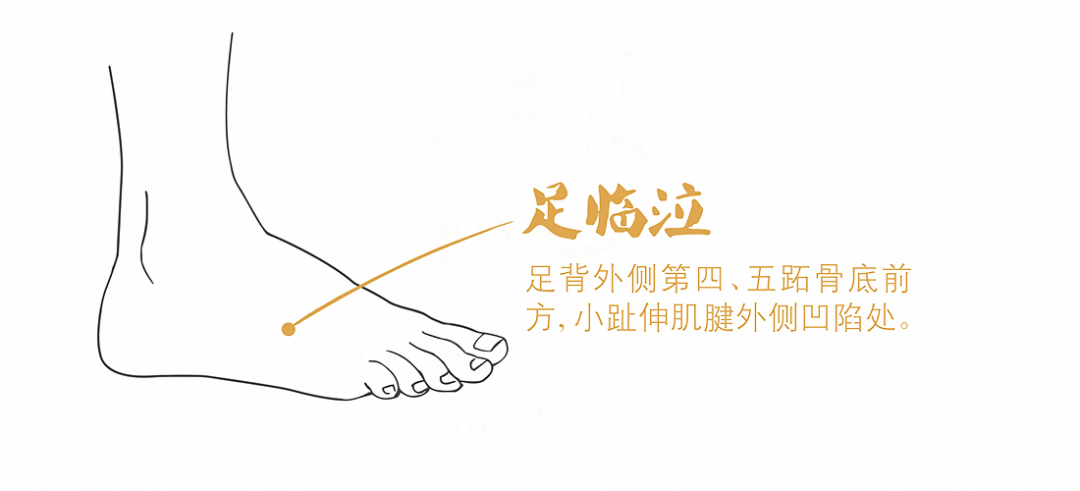
Lin Qi point is one of the main points on the Gallbladder meridian, connecting with the Dai Mai, and is a wonderful point for adjusting one meridian while regulating two.The Dai Mai runs around the navel, like a jade belt tied around the center of the body, restraining the longitudinal meridians and enhancing the connection of Qi and blood flow between the meridians, making it a very important health meridian for the body.
When using this point, you can adopt a curled leg sitting posture; it is located on the outer side of the foot, in the gap between the fourth and fifth metatarsal bones. The Lin Qi point governs the upward flow of the Shaoyang Qi in the body, dispersing the Qi stagnation of the liver and gallbladder; frequent pressing can yield better results than professional foot therapy.
Source: This article is sourced from the internet; if there is any infringement, please contact the editor for deletion. We maintain neutrality regarding the views expressed in the text, which are for reference and exchange purposes only.

